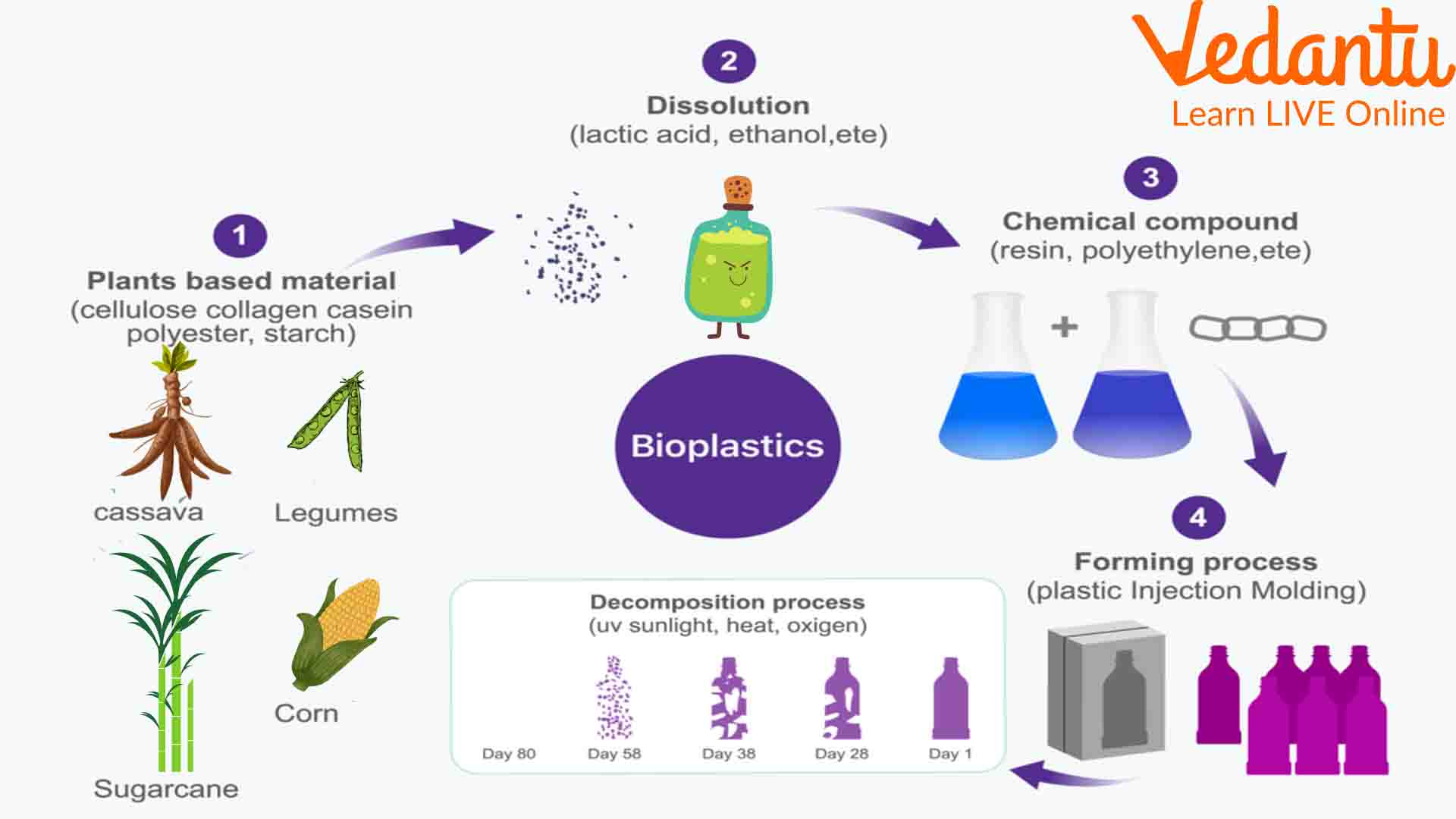Advantages of Bioplastics We Should Know and Avoid Using Plastics
Since the discovery and use of fossil fuels, we have witnessed a huge boost in the industrial sectors. We also make many new things from the by-products evolved from the process of making petrol and diesel. One such product is plastic. It has literally transformed the packaging industry and various other sectors but has also caused huge damage to our ecosystem.
One of the best replacements for plastic is bioplastic. What is it? Why is it considered to be a replacement for plastic? Let us find out the advantages of bioplastics and their usability in the modern-day world.
What is Bioplastic?
As the name suggests, it is a plastic material produced from plant sources. The term bio means life. It means that the source of material used for making plastic entirely comes from a plant.
The most general sources that researchers have been working on to create sustainable solutions are vegetable oils, vegetable fats, rice starch, corn starch, plants, woodchips, sawdust, straw, food waste, etc. Bioplastics are made from these sources and are 100% biodegradable. They do not take years to get degraded like plastic.
These sources considered to make bioplastic are renewable. On the other hand, crude oil is used to make plastic. It is a non-renewable source and is depleting quite fast. Researchers are still looking for more viable options to make bioplastic out of agricultural by-products and to give the world a better solution.
Chemical Nature of Bioplastics
As mentioned earlier, bioplastics are made of plant-based sources instead of non-renewable resources. The chemical composition of this type of plastic helps us to categorise it into the following segments.
1. Bio-Based Plastic
This type of plastic is made from renewable resources either wholly or partially. Non-renewable resources are not used to make such plastics. The most common resources used for making this plastic are corn, potato, soy, rice, sugarcane, vegetable oils, banana peels, wheat, etc.
For example, if we use corn starch, we can produce polylactic acid (PLA). This acid has properties resembling polyethene terephthalate (PET) and polypropylene (PP), a by-product generated from the fractional distillation of crude oil. These bioplastics examples are used for manufacturing food packaging, diapers, tea bags, cups, etc.
2. Biodegradable Plastic
This classification of bioplastic refers to the combination of petroleum-based plastic compounds and additives. These additives help this type of bioplastic break down easily. The additives are commonly produced from renewable resources such as cellulose, sugarcane, and corn. Selective microorganisms are mixed with petrochemicals and renewable resources to produce this type of plastic.
3. Compostable Plastic
Compostable plastic is one of the biodegradable plastics examples that can be biodegraded through compositing. This is so far the ideal type of plastic made from renewable resources that do not leave a trace or toxic residue. The renewable resources used to make such plastic are starch extracted from tapioca, corn, cellulose, soy protein, potato, etc. It can also be made from lactic acid.
From the above classification, we can clearly understand that bioplastic materials vary according to the resources used to make them. Biodegradable plastic, among all these classifications, is not ideal for the ecosystem but has advantages over plastic.

Bioplastic
Advantages of Using Bioplastic
Bioplastic is the best replacement for plastic we have to date. Its advantages are unique and can be highly encouraging to promote its use.
1. Reducing Carbon Footprints
One of the biggest demerits of plastic is leaving a massive carbon footprint behind while manufacturing and using. Even if plastic is recycled, it is very tough to reduce the production of carbon dioxide from the process. You will be surprised to know that producing 1 kg of plastic releases around 6 kg of carbon dioxide into the atmosphere. This is where bioplastic can be of great use.
2. Depleting Fossil Fuels
More than 8% of the fossil fuels produced are used in making plastic worldwide. It means we are using fossil fuels for something that cannot be degraded. Once produced, plastics will remain in the ecosystem unless recycled and reused. Hence, billions of litres of fossil fuel are used to make plastic which we cannot get back.
In this aspect of bioplastic vs plastic, there are marvellous techniques to create bioplastic using 100% renewable and biodegradable resources. We can get rid of this type of plastic easily and will not leave traces behind in the ecosystem.
3. Only Months for Decomposition
Bioplastic takes merely a few months to decompose. Plastic, on the other hand, can take 1000 years to decompose. Even if they decompose, we have found traces of microplastic in the salt we consume and the marine ecosystem.
4. Less or Nontoxic
Bioplastics are less or nontoxic than conventional plastics. One of the merits of plastic is it's less costly than bioplastic but very harmful to our environment.
5. Can Increase Soil Fertility
Biodegradable plastics can be dumped in open fields as they are good for soil fertility. They will get decomposed and assimilate with the soil.
The Win of Bioplastic Over Plastic
When we compare plastic advantages and disadvantages with bioplastic, we always find the latter one environment-friendly. The only problem is that we do not have the capacity to produce that much bioplastic to replace plastic.
We can use bioplastic almost anywhere. If you simply start noting how much plastic you use every day, you will be shocked. Due to the advantages of using plastic, it has entered all aspects of our lives.
Hence, we need better manufacturing processes that will make bioplastic a viable option in all those segments. Every year, we dump 8.2 billion kg of plastic in the oceans. We must switch from plastic to bioplastic to save the only planet we have. We need better and more renewable resources to produce bioplastic to make it a sustainable option.







